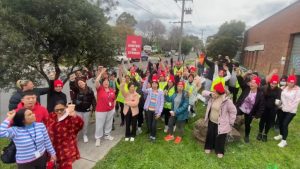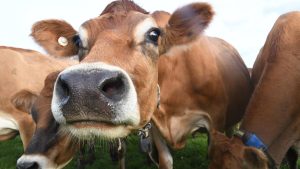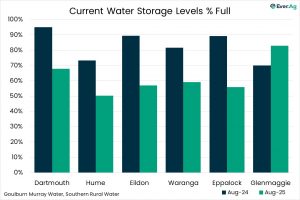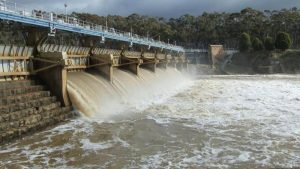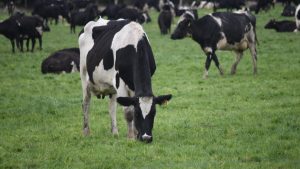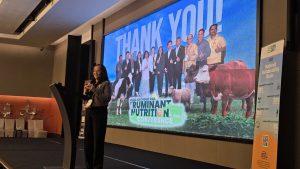
When dairy farmer Paul Mumford milks his herd outside Yarram in Victoria’s South Gippsland early in the morning and late in the afternoon, he’s keenly aware it coincides with peak energy use for the rest of the population.
“That doesn’t sit extremely well with the natural flow of the energy use from the grid, because those times are when children are going to school, households are waking up and using energy before and after work,” he says.
The president of United Dairyfarmers of Victoria, Mumford says energy is one of the biggest costs for dairy farmers.
It’s just not an option to milk 200 cows by hand, and milking the cows twice a day is imperative for his animals’ welfare.
A year ago the property lost power for six days in two separate wind storms.
“I survived OK because my farm has onsite power generation which connects to my tractor,” he told Guardian Australia.
The turning spline on Mumford’s diesel tractor creates a power take-off that turns a generator and creates energy for his dairy shed.
However, he says the power outage caught his neighbours out, two of whom had to bring their herds to Mumford’s dairy operation to be milked.
He says there’s been an expectation that the electricity would always be there, but for his area the storms were a “big wake-up call”.
“Because it’s mandatory to milk cows regularly twice a day, [the storms] left a whole lot of farmers vulnerable.”
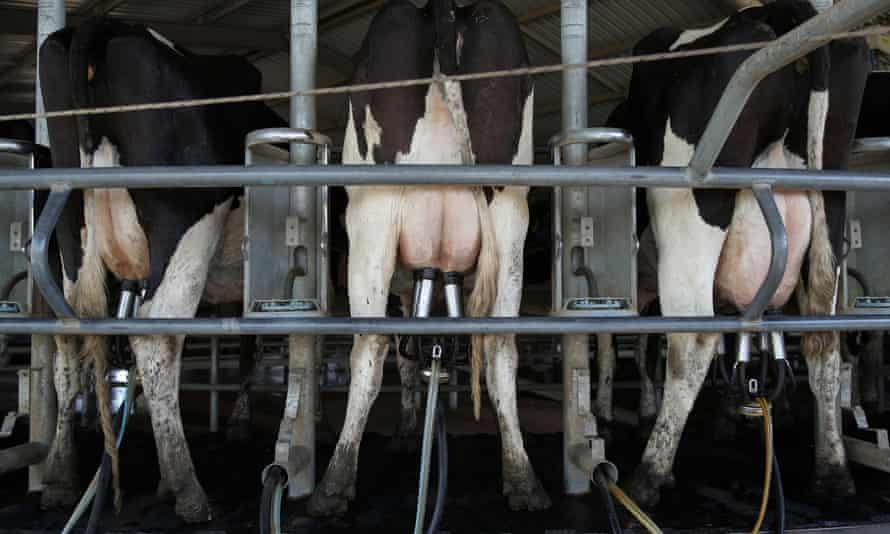
Mumford says farmers are generally looking at reducing the risk of power outages and shortages to their business, and on-farm power generation is a big part of that.
‘An expensive endeavour’
While energy costs are hitting agricultural industries hard, their vulnerability to energy supply has seen farmers develop unique hacks – and rediscover old ones – to keep the power going without the grid.
Ash Salardini, the chief economist at the National Farmers’ Federation, says that dairy, intensive horticulture and irrigation are the industries most exposed to wholesale market prices, which have gone up anywhere between 100% to 140%.
Salardini says while irrigation is better placed to manage their electricity use as they can pump water at different times, horticulture and dairy are more vulnerable because they need to regulate their produce at certain temperatures.
“Imagine how much electricity your fridge uses. Now imagine you have to cool down 300,000 litres of milk. That’s an expensive endeavour,” Salardini says.
He says for intensive horticulture’s climate-controlled greenhouses, “that’s the equivalent of running a reverse-cycle conditioner in an area that might be the size of 50 football fields.”
According to Salardini, before the current energy crisis, a typical dairy farmer would have been paying $150,000 in electricity costs a year, but the annual cost would now be up to $250,000.
Whether farmers feel the effects of the price spikes immediately depends on when their contract is due to be renewed.
‘A confluence of factors’
Kevin Coady, a wheat farmer outside Dubbo in the New South Wales Orana region, still has a petrol-driven generator he says was more common for farmers to have 20 years ago when blackouts were more frequent.
“Nearly everyone on a farm had a back-up generator back then,” he says.
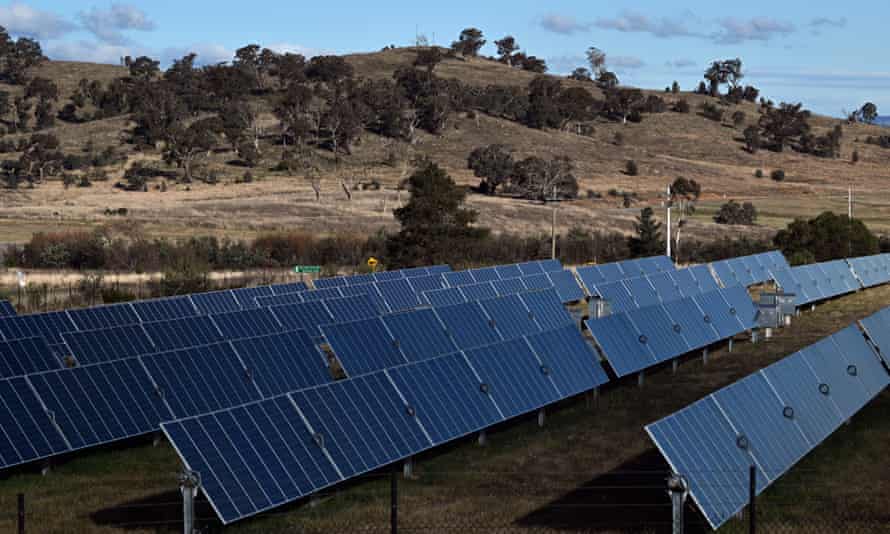
However, he says the blackouts don’t occur as often anymore and generators are not as common as they used to be.
Yet Salardini says regional areas have often been more liable to energy shortages and farmers can lose an entire day or week’s worth of work if they don’t have refrigeration.
According to him, more farmers are turning to on-farm sources of renewable energy including solar, batteries and even biodigesters, which turn waste to energy.
Moxey dairy farm at Gooloogong, west of Cowra in the NSW central west, moved to address rising electricity costs back in 2018 by using the gas from cow manure to generate 100% of its power needs.
Salardini says farmers are some of the biggest users of photovoltaic energy.
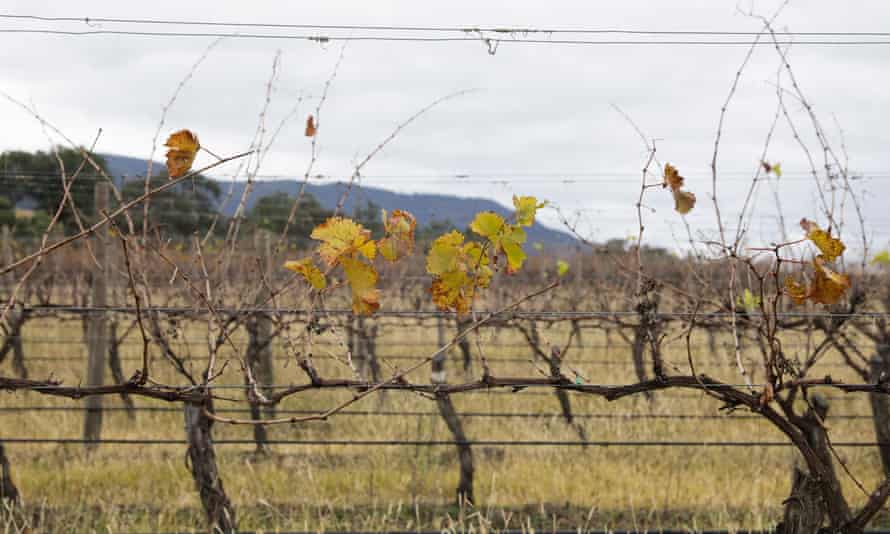
Justin Jarrett, the co-owner of See Saw Wines in the central tablelands’ Orange region powers his winery during the day using solar energy. He doesn’t currently have storage capacity for the energy, but tells Guardian Australia that battery storage is the operation’s next step.
Salardini says that energy efficiency measures also need to be considered alongside power generation.
Stuart Crossthwaite, a dairy farmer in the Kiewa Valley in north-east Victoria, conducted an energy audit, finding that 40% of his dairy’s energy use is to heat hot water for cleaning, 40% to cool the milk and 20% to run equipment.
Crossthwaite realised that a heat exchanger method would allow him to use the heat from the milk to warm the water that cleans his dairy.
As much as farmers try to keep electricity costs at bay, Salardini says the rising cost of energy is just one factor that is pushing farm gate prices up.
Other cost pressures include fuel and freight price hikes and the impact of workforce and workforce shortages.
“That’s why we are seeing food price inflation in the supermarkets,” he says.
“It’s a confluence of factors, but electricity price is definitely one of them.”





